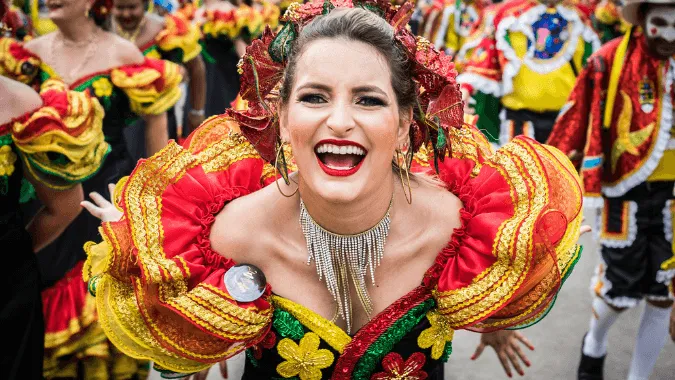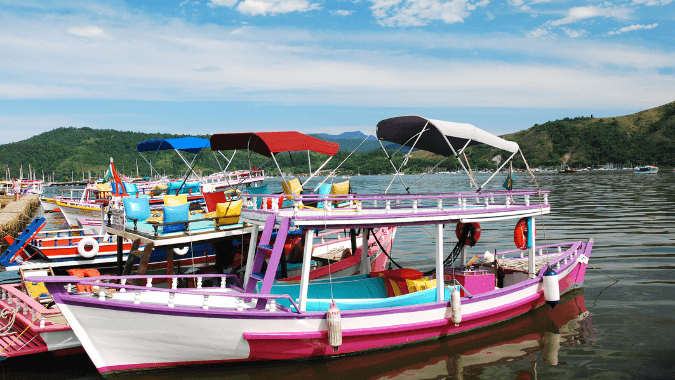Insider Tips
The Wine Route in Chile: How and when to visit the Colchagua Valley
Tags:
chilean wine
Chile is one of the most world renowned wine producing countries, and without a doubt it finds itself (along with Argentina) on the top podium for Latin America. This can be easily proven if you check the laurel-wreaths won by the Chilean vineyards in the international rankings that are published. Wine Spectator, Drinks International, the prestigious Vinalies Internationales from the Union of French Oenologists, and also the Bacchuss, a prize given by the European Union of Wine-tasters. ![Valle de Colchagua]()
However, wine is not the only product to be tasted by the palate, but it is also the gateway to the traditional world of the Chilean countryside. We are talking about what is called the wine routes, that in the last ten years have connected different vineyards within specific valleys, with the aim of showing to the tourist the production process of the nectar that Dionysus drinks, just like the entire culture around the cultivation of the vine. For those that don’t know, the great majority of the Chilean vineyards are sitting in valleys relatively close to the country’s capital. With this simple information, one could imagine the towns that surround the cultivated countryside to the South and similarly to the North of Santiago, share the same cultural identity with the citizen that inhabits the large city. But the complete opposite occurs since in general, the central valleys coincide with the more traditional nucleus of Chilean culture and where the influence of the creole customs is very strong. These valleys are the home of the so-called “huaso (farmer/peasant) chileno”, a term colloquially used to refer to the mixed-race that lives in the countryside and whose identity is constructed by both the Spanish and Indigenous inheritance. As well, the huaso is also a skilled person in all rural work, uses terms related to cattle driving and knows the planting and harvesting cycles. Following this logic, many agree to point out that, from far away, the most traditional region of all belongs to the Colchagua Valley, located in the Sixth Region of Chile, at only 160 kilometers to the South of Santiago. If you have the desire to live an experience where the beautiful expanse of the open countryside, enology, and the creole customs combine together, you can’t miss out visiting these fertile valleys cultivated and surrounded by mountains. Travel tip: Book the Guided Tour to the Colchagua Valley Wine Tour from Santiago and get to know its famous vineyards.
![Valle de Colchagua]()
![Valle de Colchagua]()
![Valle de Colchagua]()

According to the International Organization of Vine and Wine (OIV), Chile is the 2nd producer of wines in the world, after Argentina / Photo: Brian Gray
However, wine is not the only product to be tasted by the palate, but it is also the gateway to the traditional world of the Chilean countryside. We are talking about what is called the wine routes, that in the last ten years have connected different vineyards within specific valleys, with the aim of showing to the tourist the production process of the nectar that Dionysus drinks, just like the entire culture around the cultivation of the vine. For those that don’t know, the great majority of the Chilean vineyards are sitting in valleys relatively close to the country’s capital. With this simple information, one could imagine the towns that surround the cultivated countryside to the South and similarly to the North of Santiago, share the same cultural identity with the citizen that inhabits the large city. But the complete opposite occurs since in general, the central valleys coincide with the more traditional nucleus of Chilean culture and where the influence of the creole customs is very strong. These valleys are the home of the so-called “huaso (farmer/peasant) chileno”, a term colloquially used to refer to the mixed-race that lives in the countryside and whose identity is constructed by both the Spanish and Indigenous inheritance. As well, the huaso is also a skilled person in all rural work, uses terms related to cattle driving and knows the planting and harvesting cycles. Following this logic, many agree to point out that, from far away, the most traditional region of all belongs to the Colchagua Valley, located in the Sixth Region of Chile, at only 160 kilometers to the South of Santiago. If you have the desire to live an experience where the beautiful expanse of the open countryside, enology, and the creole customs combine together, you can’t miss out visiting these fertile valleys cultivated and surrounded by mountains. Travel tip: Book the Guided Tour to the Colchagua Valley Wine Tour from Santiago and get to know its famous vineyards.

The Colchagua Valley is the most traditional region on the Wine Route in Chile. Photo: Brian Gray
When to go
You can visit the vineyards of the central valleys at any time of the year. Nevertheless, we recommend that you do it at the beginning of Spring or towards the end of Summer and the start of Fall, that is to say, between March and April. On the one hand, Spring is an excellent time since the entire countryside and the central valleys’ peaks are green and overflowing with freshness, the climate is pleasant, the fruit trees are in bloom and grapes on the vines start to grow at a sustained rhythm. It has to do with, in short, a visual spectacle. What’s more, if you prefer to go in Fall you will be able to live all of the traditional magic of the Wine Harvest Festival, which is celebrated during the picking and gathering of the grapes to be used in the production of this treasured elixir.How to get access
The majority of the vineyards of Colchagua Valley offer tours, which is why going on your own is an option. In such a case, we recommend that you rent a car since generally speaking the vineyards are located on roads and routes to the outskirts of the towns or cities and not all of the inter-urban buses will leave you near the main entrances. To get an idea, the tours inside each vineyard has an average cost of 32 USD, and they usually include guided visits through the vineyards, the main houses, and the underground wine cellars that offer wine-tasting of one or more wines. These tours run continuously from nine in the morning until five in the afternoon. If you decide to do it at lunch time, maybe you prefer to buy the tours that include buffet, since many of the vineyards also have elegant restaurants with authentic food open to the public. These restaurants are first class and are characterized by their beautiful architecture and atmosphere and for the important recognition, they have received by the national gastronomy critics. The tour + buffet has a cost ranges between 77 to 150 USD, depending on the restaurant, the vineyard and the day of the week. Travel Tip: If renting a car is not in your plans and you are enjoying a few days in the valley, you can book the Guided Tour to the Colchagua Wine Route, that offers transfer service from hotels in the Colchagua Valley and a visit + tasting in 3 vineyards of the region. Another very recommendable option is the famous Flavors of the Valley Train, an old restored coal-run locomotive train that leaves from Santiago’s central station and goes straight to San Fernando (Colchagua Province’s capital) going through the region’s cultivated countryside. From there the same operator has buses that transfer the passengers to one of the vineyards of the Association of Colchagua Vineyards for a guided tour, a wine tasting and then head back to Santiago on-board the same train, that also has live music, a cafeteria, more wine tasting and other special services designed for tourists.
Many of the vineyards also have elegant restaurants with authentic food open to the public / Photo: Daytours4u
The lost grape of France
What kind of things can a tourist do in the valley? The most obvious is related (of course) to the wine culture, and this what the collectors, the wine experts and ameteur wine tasters will enjoy the most. Maybe one of the things that wine enthusiasts can value the most has to do with the famous carmenère grape, which does really well in this region of the world and that serves for making a typically Chilean signature wine. The carmènere is one of the oldest grapes from Europe and is currently recognized as one of the Bordeaux French region’s six original grapes along with cabernet sauvignon, cabernet franc, merlot, malbec, and the petit verdot. However, this grape that gets its name from its carmine tonality that the vine leaves adquire in Fall, it ceased to be cultivated in France in 1897 due to a plague that affected all of the vines of Europe and that especially devastated this variety, to the point that they believed it lost forever. Until it was found out that the variety was being cultivated in Chile, the country where the climate favors the growth of the Merlot vine and in passing the carmenère slips that were imported inadvertently and mixed with the merlot ones at the end of the 19th century. But nobody in Chile knew that this was the lost grape of France. In fact, they believed that it was a merlot variety and often mixed both grapes together to make the same wine. In 1994 a French wine expert that was passing through the country confirmed that a different grape was being dealt with, the legendary Bordeaux Carmenère.
During the Wine Route in Chile, you will enjoy the famous grape carmenère, one of Europe’s oldest / Photo: Daytours4u
Travel tip: Take into account that in the salesrooms of these vineyards a variety of top of the line wines at convenient prices are available, some of them cannot be found on sale in supermarkets or grocery stores in Chile, rather they go directly to the export containers or, in some cases, to exclusive wine shops. This is why we recommend that you don’t miss the opportunity to take a great bottle from this Wine Route since it is guaranteed you will get it at an unbeatable and incomparable market price to what is used at the world’s wine shops and supermarkets.By: Brian Gray, Chilean anthropologist and muralist specialized in visual urban culture.
Tags:
chilean wine
Search
-
Exciting 4x4 route: São Luís and FortalezafromUS$1,014
-
Vila Gale Mares Resort All InclusivefromUS$100
-
Ecotourism in Chapada DiamantinafromUS$672
-
All inclusive Vila Gelé Cumbuco ResortfromUS$999
-
Full Day Cafayate Tour from SaltafromUS$68
-
Transfer Aeroparque - Buenos AiresfromUS$46
-
-
Transfer Ezeiza - AeroparquefromUS$91
-
-
Excursion to El Chaltén from El CalafatefromUS$153
-
-
-
-
-
-
-
-
-
-
-
Daytours4u © 2012-2019. Use of this website constitutes acceptance of the Terms & Conditions.
Open Chat
Hello, How May I Help You?



